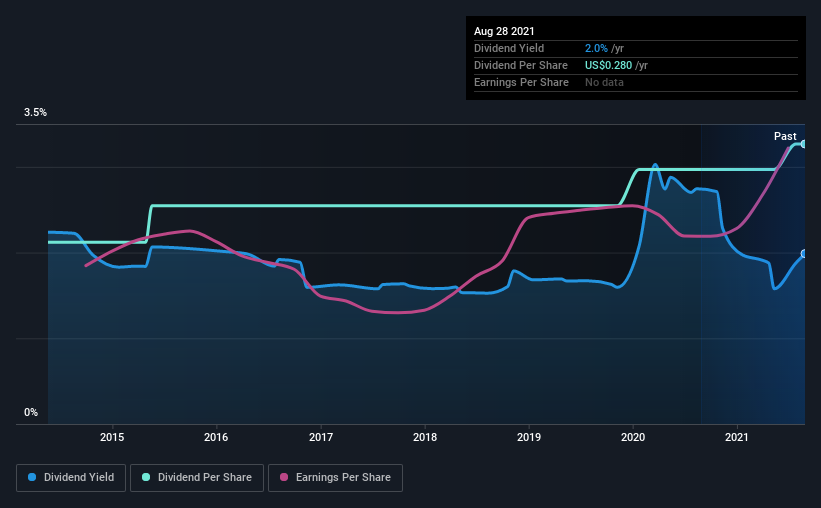Be Sure To Check Out Bank of the James Financial Group, Inc. (NASDAQ:BOTJ) Before It Goes Ex-Dividend
Readers hoping to buy Bank of the James Financial Group, Inc. (NASDAQ:BOTJ) for its dividend will need to make their move shortly, as the stock is about to trade ex-dividend. The ex-dividend date occurs one day before the record date which is the day on which shareholders need to be on the company's books in order to receive a dividend. The ex-dividend date is an important date to be aware of as any purchase of the stock made on or after this date might mean a late settlement that doesn't show on the record date. Thus, you can purchase Bank of the James Financial Group's shares before the 2nd of September in order to receive the dividend, which the company will pay on the 17th of September.
The company's next dividend payment will be US$0.07 per share, on the back of last year when the company paid a total of US$0.28 to shareholders. Last year's total dividend payments show that Bank of the James Financial Group has a trailing yield of 2.0% on the current share price of $14.08. Dividends are a major contributor to investment returns for long term holders, but only if the dividend continues to be paid. We need to see whether the dividend is covered by earnings and if it's growing.
See our latest analysis for Bank of the James Financial Group
If a company pays out more in dividends than it earned, then the dividend might become unsustainable - hardly an ideal situation. Bank of the James Financial Group is paying out just 18% of its profit after tax, which is comfortably low and leaves plenty of breathing room in the case of adverse events.
Generally speaking, the lower a company's payout ratios, the more resilient its dividend usually is.
Have Earnings And Dividends Been Growing?
Stocks in companies that generate sustainable earnings growth often make the best dividend prospects, as it is easier to lift the dividend when earnings are rising. If business enters a downturn and the dividend is cut, the company could see its value fall precipitously. This is why it's a relief to see Bank of the James Financial Group earnings per share are up 8.6% per annum over the last five years.
The main way most investors will assess a company's dividend prospects is by checking the historical rate of dividend growth. Since the start of our data, seven years ago, Bank of the James Financial Group has lifted its dividend by approximately 6.4% a year on average. We're glad to see dividends rising alongside earnings over a number of years, which may be a sign the company intends to share the growth with shareholders.
To Sum It Up
Is Bank of the James Financial Group worth buying for its dividend? Bank of the James Financial Group has seen its earnings per share grow slowly in recent years, and the company reinvests more than half of its profits in the business, which generally bodes well for its future prospects. Bank of the James Financial Group ticks a lot of boxes for us from a dividend perspective, and we think these characteristics should mark the company as deserving of further attention.
So while Bank of the James Financial Group looks good from a dividend perspective, it's always worthwhile being up to date with the risks involved in this stock. To help with this, we've discovered 3 warning signs for Bank of the James Financial Group that you should be aware of before investing in their shares.
We wouldn't recommend just buying the first dividend stock you see, though. Here's a list of interesting dividend stocks with a greater than 2% yield and an upcoming dividend.
This article by Simply Wall St is general in nature. We provide commentary based on historical data and analyst forecasts only using an unbiased methodology and our articles are not intended to be financial advice. It does not constitute a recommendation to buy or sell any stock, and does not take account of your objectives, or your financial situation. We aim to bring you long-term focused analysis driven by fundamental data. Note that our analysis may not factor in the latest price-sensitive company announcements or qualitative material. Simply Wall St has no position in any stocks mentioned.
Have feedback on this article? Concerned about the content? Get in touch with us directly. Alternatively, email editorial-team (at) simplywallst.com.

